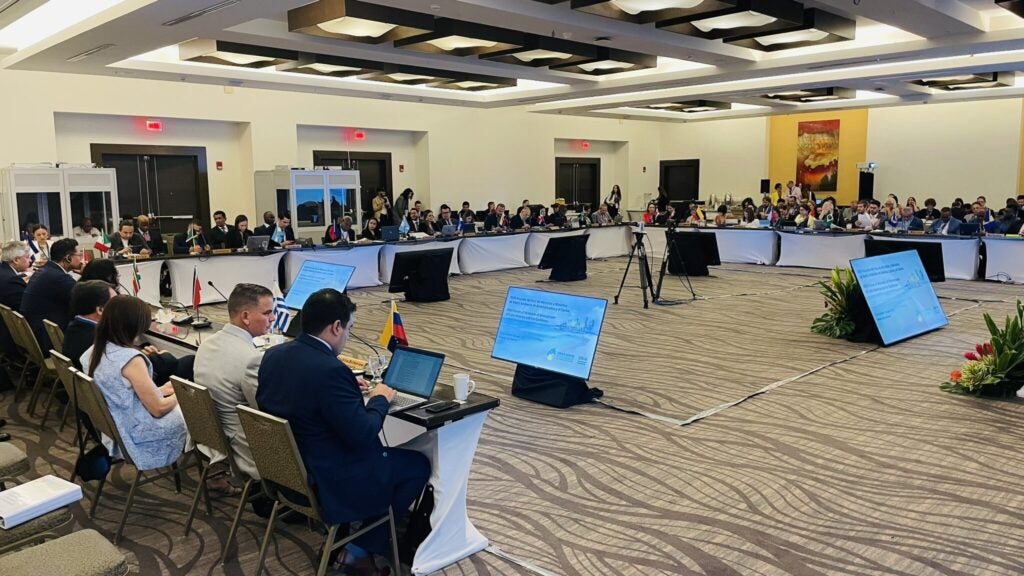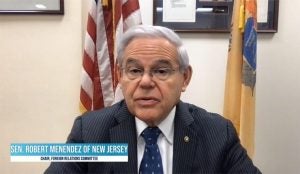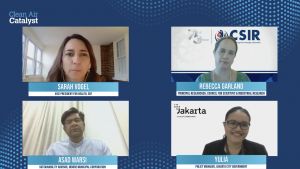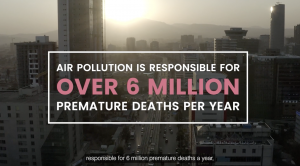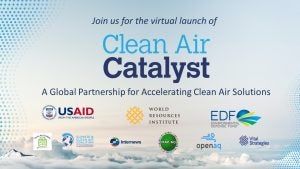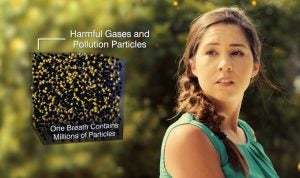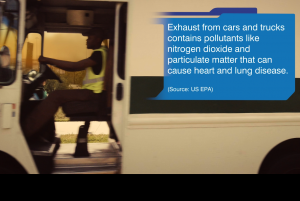
Addressing the enormous funding disparity for clean air solutions is essential to achieving global health, climate and sustainable development goals.
Air pollution affects almost everyone and carries severe consequences for public health, the environment and our climate, yet efforts to combat it are severely underfunded, especially in Latin America and the Global South. Less than 1% of development funding goes to air quality programming each year.
When leaders meet at the Sixth Session of the United Nations Environment Assembly (UNEA-6) at the end of February in Nairobi, we have the opportunity to demonstrate how investing in air quality programs is a no-brainer that will deliver huge economic, health and environmental dividends.
Ignoring air pollution is expensive: A staggering 7 million die prematurely each year due to air pollution. But this astonishing statistic barely scratches the surface of the problem. The morbidities from air pollution, including chronic respiratory diseases, cardiovascular conditions and mental health deterioration are also costly. According to the World Bank, the economic toll of health impacts from air pollution totals $8.1 trillion annually, equivalent to 6.1% of the global GDP.
A disproportionate burden on the Global South: Regions across the Global South face a disproportionate share of the air pollution crisis, further aggravated by severe underfunding. For example, the Latin America and the Caribbean (LAC) region received only 1% of all air quality funding spent worldwide between 2017-2021, according to a Clean Air Fund analysis. These areas, grappling with booming populations and escalating transport and industrial activities, confront unique challenges in combatting air pollution and are hindered by limited resources.
The link between air pollution and climate change: The connection between air pollution and climate change is intricate. Air pollution results from many of the same activities that are best known for emitting greenhouse gasses, such as fossil fuel-powered transportation, agricultural production and waste management. Cutting these emissions not only slows global warming but also improves immediate health outcomes by alleviating air pollution, offering enormous returns on investment for both human wellbeing and the climate.
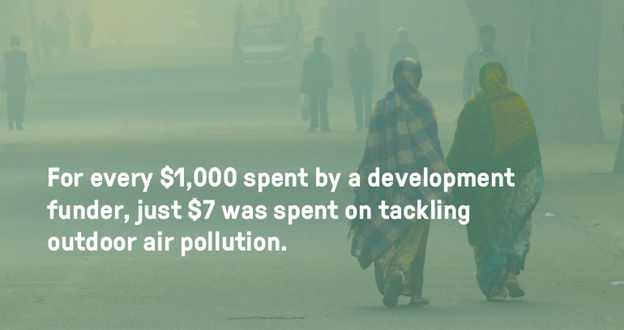
Graphic source: The State of Global Air Quality Funding 2023, The Clean Air Fund
The societal and economic benefits: Addressing air pollution globally—especially in the Global South—can revolutionize societal well-being and spur economic growth. Every $1 spent on reducing air pollution returns about $30 in economic benefits, according to the U.S. Environmental Protection Agency. Cleaner air leads to healthier communities, reduced healthcare costs, increased productivity and enhanced quality of life. It’s also a critical step toward achieving the Sustainable Development Goals (SDGs).
How key stakeholders can help: Every major sector will have a role to play if we are to tackle air pollution and achieve health, climate and sustainability objectives. Here is how.
- Governments can help set a clean air agenda by prioritizing integrated clean air initiatives within national and subnational policies. This involves enforcing stringent emissions regulations, investing in sustainable infrastructure and allocating resources. Governments should also seek partnerships with the private sector to leverage additional resources and expertise. Aligning funding with regional priorities and international frameworks is also crucial for effective implementation.
- Funders should lead the way in amending the funding imbalance by establishing dedicated financing mechanisms for new clean air projects and increasing access to climate and development funds. They can also help improve coordination between public and private sources to maximize impact per dollar and foster cross-sector collaboration.
- Non-profit organizations are pivotal for raising awareness of the air pollution crisis and conveying the enormous economic, health and climate returns to clean air funding. Through strategic engagement with governments, funders, impacted communities and the private sector, the global civil society community can also strengthen the case for more equitable deployment of clean air funding across regions.
- The private sector is vital for combating air pollution by striving to reduce emissions and investing in clean technologies. The World Economic Forum’s recent collaboration with the Clean Air Fund offers a sound example of how a joint endeavor with governments and civil society can help achieve universal clean air. Initiatives like this can empower businesses to contribute resources and innovation, promoting sustainable supply chains and assisting companies to meet emission reduction targets.
New opportunities: The Climate and Clean Air Coalition’s Clean Air Flagship announced at COP28 and the Draft Resolution on Air Pollution expected at UNEA-6 later this month represent big steps in the global collaboration against air pollution. While helping coordinate collective action, these initiatives must be accompanied by an unrelenting call for increased funding. The overwhelming economic, public health and environmental returns on such an investment should feature heavily in that call.
As we gear up for UNEA-6, recognizing the intertwined nature of air pollution, public health and climate change is crucial. Expanding funding and concerted action is not just an environmental or health necessity; it’s a moral imperative for the well-being of current and future generations. Now is the time for urgent, coordinated action to protect our planet and ensure clean air for all.
Sergio Sánchez is the Senior Policy Director of Global Clean Air for EDF Health, working globally to implement air pollution abatement policies and climate change mitigation strategies.










